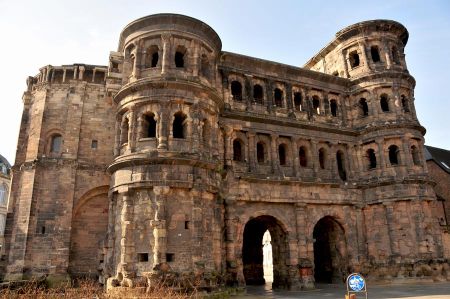Roman cement - building material for eternity
- Written by Portal Editor
When it comes to ancient buildings, one automatically thinks of Rome with its completely intact Pantheon or the gigantic ruins of the Colosseum.
Not only the "eternal city", but all of Italy is characterized by the remains of temples, thermal baths and taverns. They were all built by the Romans around 2,000 years ago. Despite various smaller earthquakes, subsidence, downpours, storms and finally the pollution of modern times: They are still standing!
The Romans not only brought the stone casting, which was already known to the ancient Greeks, to practical maturity, they were obviously also able to build with it for eternity. In view of today's new buildings, which - such as the Chancellery - often crack and / or leak after just a few years, the question arises: How did the Romans manage that?
Roman cement - that lasts and lasts and lasts
 As part of an international project, scientists from various disciplines wanted to finally unravel the mystery of the ancient builders. Famous ancient Roman architects such as Vitruvius and Pliny wrote down the recipe for Opus Caementitium, Roman cement, and it has even survived to this day. However, material researchers were still unable to explain the extreme longevity and resilience of the building material for a long time.
As part of an international project, scientists from various disciplines wanted to finally unravel the mystery of the ancient builders. Famous ancient Roman architects such as Vitruvius and Pliny wrote down the recipe for Opus Caementitium, Roman cement, and it has even survived to this day. However, material researchers were still unable to explain the extreme longevity and resilience of the building material for a long time.
The secret is revealed
So they took samples from foundations of ancient Roman structures throughout the Mediterranean. Drill cores up to one meter long from different centuries, cast from Roman cement, coarse stones, pebbles and sand. They examined this using a wide variety of modern analysis methods. During their investigations, the team found out what distinguishes Roman cement from modern ones: the ancient recipe leads to the formation of a special crystal structure, the aluminum tobermorite, when it sets. They fill the cavities in the material with a stable crystal lattice and can thus prevent the penetration of water and the propagation of cracks in the building material.
Volcanic eruptions gave the Romans the special substance
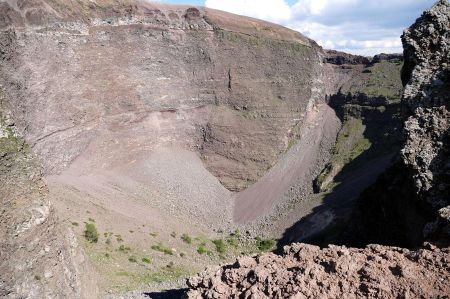 The key ingredient for the formation of these structures is apparently the volcanic ash. The Romans mined them near Naples. The most famous volcano in this region is Vesuvius. About 20 kilometers west of it begin the Phlegraean Fields ("Fields of Fire"), a still very active volcanic region along the Mediterranean coast. Around 40,000 years ago there were several large volcanic eruptions. The material ejected during these eruptions still lies in thick layers in the mountains of the Phlegraean Fields. It almost inevitably ended up in the cement mixture and was crucial for the durability of their cement, as the ancient Romans already suspected – without knowing why, of course. The "miracle material" was named after the small town of Pozzuoli on the edge of the Phlegraean Fields: pozzolan.
The key ingredient for the formation of these structures is apparently the volcanic ash. The Romans mined them near Naples. The most famous volcano in this region is Vesuvius. About 20 kilometers west of it begin the Phlegraean Fields ("Fields of Fire"), a still very active volcanic region along the Mediterranean coast. Around 40,000 years ago there were several large volcanic eruptions. The material ejected during these eruptions still lies in thick layers in the mountains of the Phlegraean Fields. It almost inevitably ended up in the cement mixture and was crucial for the durability of their cement, as the ancient Romans already suspected – without knowing why, of course. The "miracle material" was named after the small town of Pozzuoli on the edge of the Phlegraean Fields: pozzolan.
Pozzolan - the foundation of success
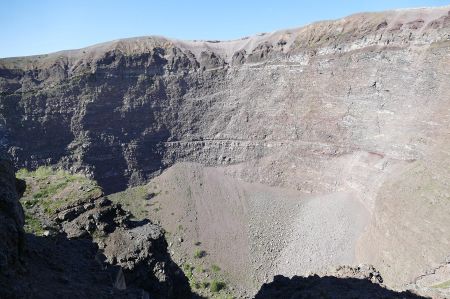 The Romans mined pozzolan in large quarries. It comes in two varieties: fine and powdery, or in light, porous lumps of pumice. The Romans used the finer pozzolan directly as an ingredient for their cement; they ground the chunks beforehand or added them to the liquid cement as "additives". Because of the many air pockets, the chunks of volcanic material are so porous that they even float in water. Thanks to its use as an aggregate, the Romans succeeded in creating the first lightweight concrete in human history - 2,000 years ago! For example, they built the famous dome of the Pantheon from slabs cast from it – with heavier building materials such as natural stone or brick, such bold constructions would have been unthinkable at the time! So it is the pozzolan that not only holds many Roman buildings together to this day, but also made some of them possible in the first place.
The Romans mined pozzolan in large quarries. It comes in two varieties: fine and powdery, or in light, porous lumps of pumice. The Romans used the finer pozzolan directly as an ingredient for their cement; they ground the chunks beforehand or added them to the liquid cement as "additives". Because of the many air pockets, the chunks of volcanic material are so porous that they even float in water. Thanks to its use as an aggregate, the Romans succeeded in creating the first lightweight concrete in human history - 2,000 years ago! For example, they built the famous dome of the Pantheon from slabs cast from it – with heavier building materials such as natural stone or brick, such bold constructions would have been unthinkable at the time! So it is the pozzolan that not only holds many Roman buildings together to this day, but also made some of them possible in the first place.
Portland cement versus opus caementitium
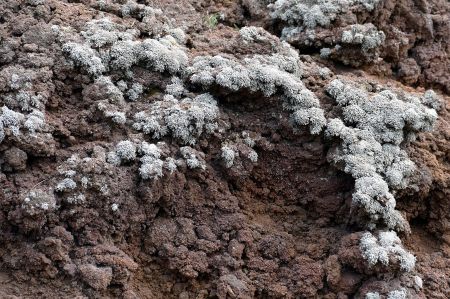 After ancient architecture went under with the Roman Empire, mankind forgot for a long time that there was such a thing as cement or concrete. It was not until the 19th century that "liquid stone" was reinvented, so to speak, this time under the name: Portland cement. The recipe for this has hardly changed to this day: Limestone and clayey earth are sintered at 1,500 degrees, i.e. burned, whereby they combine to form what is known as clinker. This releases carbon dioxide (CO2) from the limestone. The clinker is ground together with gypsum to cement. If you add water, sand and aggregates such as pebbles to the cement, you get concrete.
After ancient architecture went under with the Roman Empire, mankind forgot for a long time that there was such a thing as cement or concrete. It was not until the 19th century that "liquid stone" was reinvented, so to speak, this time under the name: Portland cement. The recipe for this has hardly changed to this day: Limestone and clayey earth are sintered at 1,500 degrees, i.e. burned, whereby they combine to form what is known as clinker. This releases carbon dioxide (CO2) from the limestone. The clinker is ground together with gypsum to cement. If you add water, sand and aggregates such as pebbles to the cement, you get concrete.
Ancient solutions to modern problems
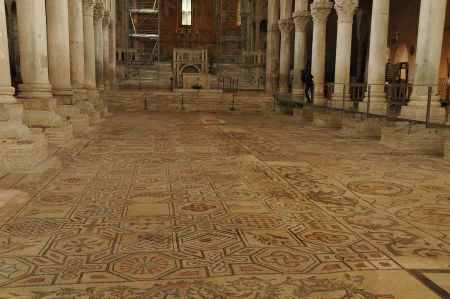 During their investigations, the materials researchers came across another advantage of Roman cement. Its production requires much less energy than that of modern cement and also releases far less CO2. This is also due to the volcanic ash: Thanks to the pozzolan, which was pre-burned in the volcano, a temperature of 1,000 degrees was enough for the Romans to burn their clinker. And because they needed less limestone, also because of the pozzolan, less CO2 was produced during production. And especially in times of climate change, reduced CO2 emissions and energy savings are of course very welcome side effects in the development of modern building materials.
During their investigations, the materials researchers came across another advantage of Roman cement. Its production requires much less energy than that of modern cement and also releases far less CO2. This is also due to the volcanic ash: Thanks to the pozzolan, which was pre-burned in the volcano, a temperature of 1,000 degrees was enough for the Romans to burn their clinker. And because they needed less limestone, also because of the pozzolan, less CO2 was produced during production. And especially in times of climate change, reduced CO2 emissions and energy savings are of course very welcome side effects in the development of modern building materials.
Old knowledge for a better future
Today, this knowledge ensures that modern concrete and cement research has completely new ideas about alternatives to conventional methods. Since natural volcanic ash is a finite resource, scientists are looking for substitutes with a similar effect. They are currently experimenting with using industrial waste, such as slag and fly ash, that has already been subjected to intense heat. Should it be possible to recycle these materials for the production of cement and concrete, the ancient knowledge of the Romans would have helped modern man in two ways: to build more durable buildings and at the same time to protect the environment.
Please read as well:
Walser costume - explanations of the tradition in Mittelberg
